Breakfast cereals have long been a convenient and popular way to start the day, especially for busy families. But not all cereals are created equal — in fact, many of the most colorful, fun, and widely advertised cereals are little more than sugar bombs disguised as breakfast.
Loaded with artificial colors, added sugars, and refined grains, these cereals can wreak havoc on your energy, appetite, and even your children’s behavior. What starts as a sweet, bright bowl often leads to a mid-morning crash and leaves you craving more sugar before lunchtime.
In this article, we expose eight of the worst offenders in the cereal aisle — brands and varieties that look enticing but come packed with ingredients that do more harm than good. From the rainbow-hued loops of Froot Loops to the marshmallow madness of Lucky Charms, these cereals offer minimal nutritional value and often contain artificial dyes linked to hyperactivity and other health concerns in kids.
But all is not lost. We also share five healthier breakfast alternatives that are easy to prepare, genuinely nutritious, and can fuel your morning with lasting energy. Whether it’s the simple goodness of plain shredded wheat, the slow-burning carbs of oatmeal with fresh fruit, or the protein-packed punch of a Greek yogurt parfait, these options prove you don’t have to sacrifice flavor or convenience to make smarter cereal choices.
If you’re ready to break free from the sugar rush and start your day with breakfasts that truly nourish, keep reading to discover which cereals to avoid and what to reach for instead.
1. Froot Loops: Rainbow of Artificial Colors
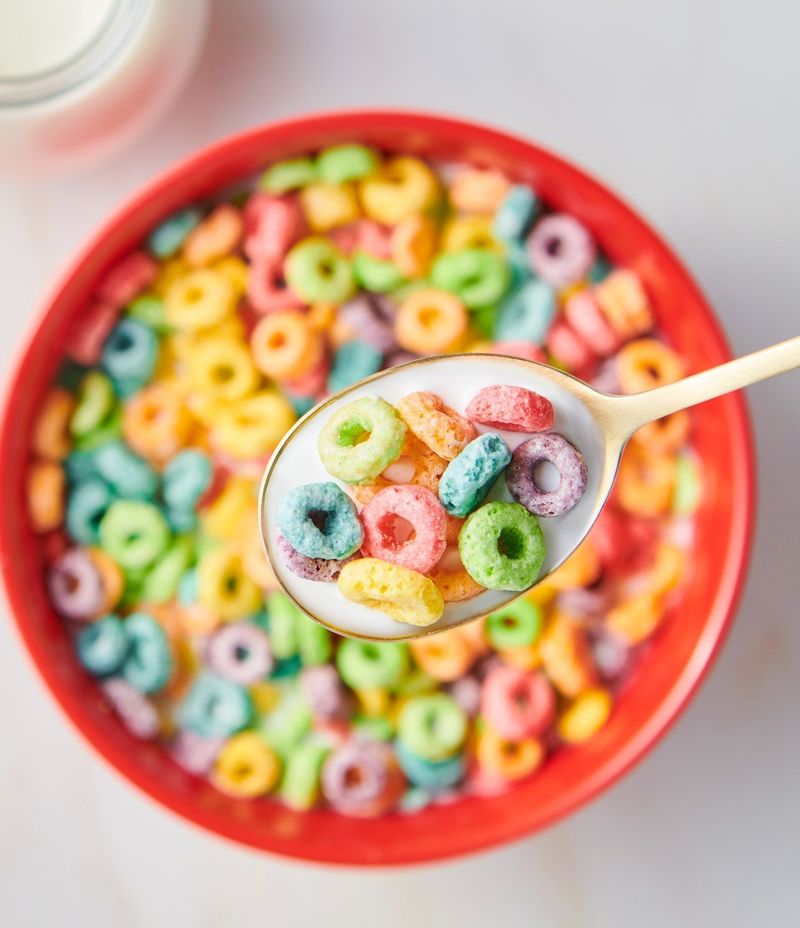
Those vibrant, colorful loops might seem fun, but they’re essentially sugar bombs with artificial food dyes. A single serving contains nearly 12 grams of sugar – that’s 3 teaspoons! The first ingredient is corn flour, not whole grain, meaning minimal fiber benefit.
Most concerning are the artificial colors like Red 40 and Blue 1, which some studies link to hyperactivity in children. The cereal provides almost no nutritional value beyond the vitamins manufacturers add during processing.
Regular consumption teaches kids to expect sweet, artificially colored food first thing in the morning, setting up unhealthy expectations about what breakfast should taste like.
2. Honey Smacks: Sugar Content Shocker
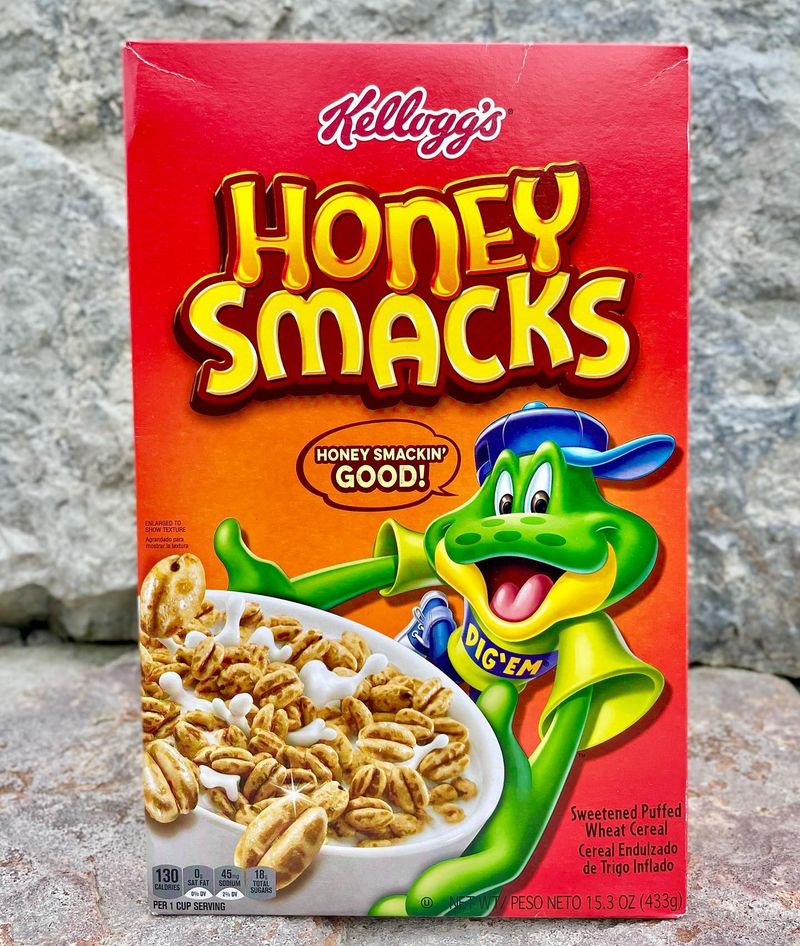
Despite the wholesome-sounding honey in its name, Honey Smacks contains more sugar per serving than nearly any other cereal on the market. A single cup packs a whopping 18 grams of sugar – more than many desserts! That’s nearly 4.5 teaspoons in just one small bowl.
The puffed wheat base gets completely overshadowed by the sugar coating. Nutritionists often point to this cereal as one of the clearest examples of how breakfast foods can be desserts in disguise.
Even more concerning, children are the primary target audience for this sweet morning option, potentially establishing lifelong preferences for ultra-sweet breakfast foods.
3. Lucky Charms: Marshmallow Madness

Those colorful marshmallow shapes might be “magically delicious,” but they’re essentially candy pieces mixed with cereal. The marshmallow bits contain artificial dyes and provide zero nutritional value – they’re just sugar, corn syrup, and modified cornstarch formed into fun shapes.
A standard serving contains around 12 grams of sugar, and many children pour much larger portions than the recommended serving size. The oat pieces themselves aren’t terrible, but they’re overshadowed by the marshmallow components.
Marketing directly targets children with cartoon characters and commercials emphasizing the fun marshmallows rather than any potential nutritional benefits, making this a particularly problematic breakfast choice.
4. Cinnamon Toast Crunch: Dessert in Disguise
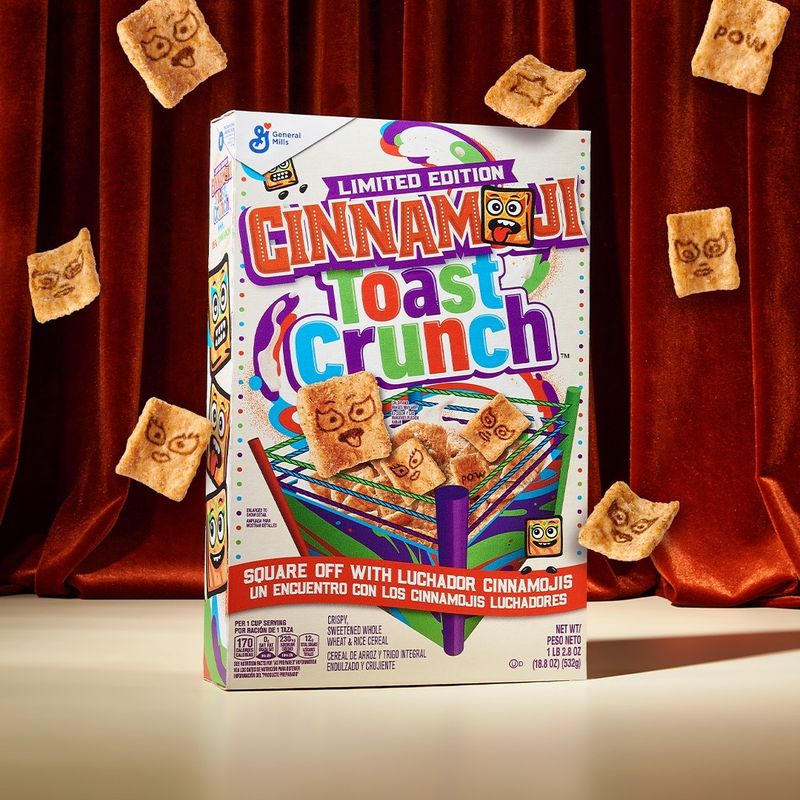
The cinnamon-sugar coating that makes this cereal so irresistible is exactly what makes it problematic. Each serving delivers about 12 grams of sugar, and the cinnamon-sugar mixture creates a craving that often leads to overeating.
While the cereal does contain some whole grain, it’s not enough to offset the sugar load. The ingredient list reveals numerous processed components including partially hydrogenated oils (though less than in previous formulations).
Many parents mistakenly believe the cinnamon aspect makes this a healthier choice, but nutritionally it’s closer to cookies than to a balanced breakfast. The cereal leaves a sweet milk residue that kids love but essentially turns your breakfast drink into sugar milk.
5. Frosted Flakes: Tony’s Sugar Coating
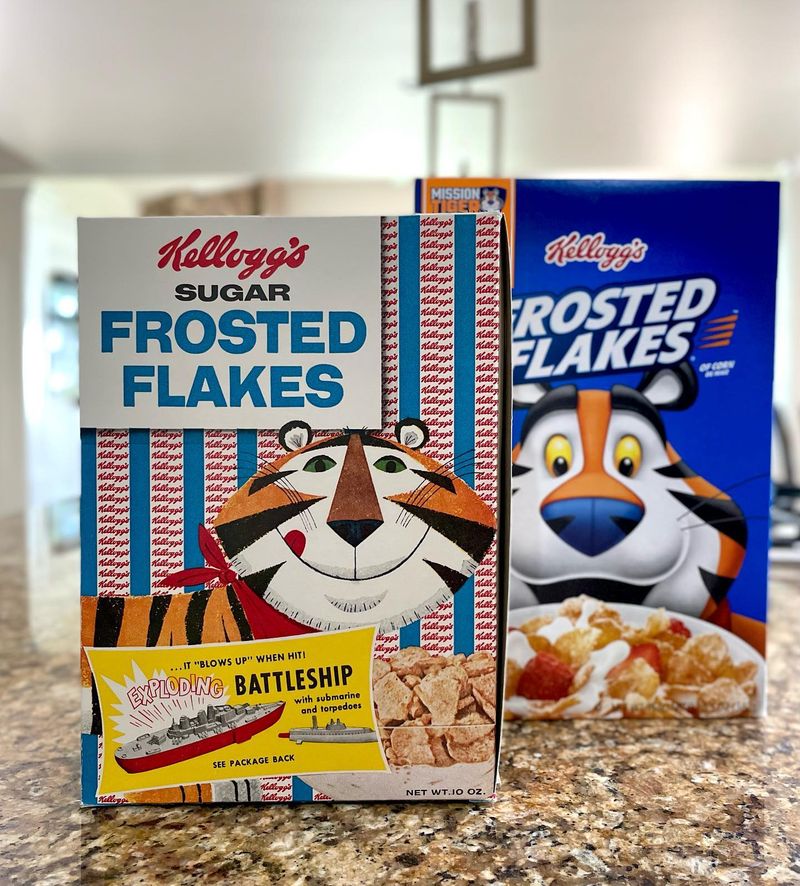
“They’re Gr-r-reat!” might be the famous slogan, but nutritionally speaking, that’s far from accurate. The base corn flakes would be relatively innocent if not for the thick sugar frosting coating each piece. A serving contains around 12 grams of sugar – equivalent to 3 teaspoons.
The cereal provides minimal fiber (less than 1 gram per serving) and very little protein, meaning it fails to provide lasting energy. Children experience a quick sugar high followed by an energy crash, hardly ideal for school mornings.
Despite marketing that positions this cereal as an athletic choice through sports-themed commercials, no nutritionist would recommend starting an active day with such a sugar-laden breakfast.
6. Apple Jacks: Fruity Flavor Fakery
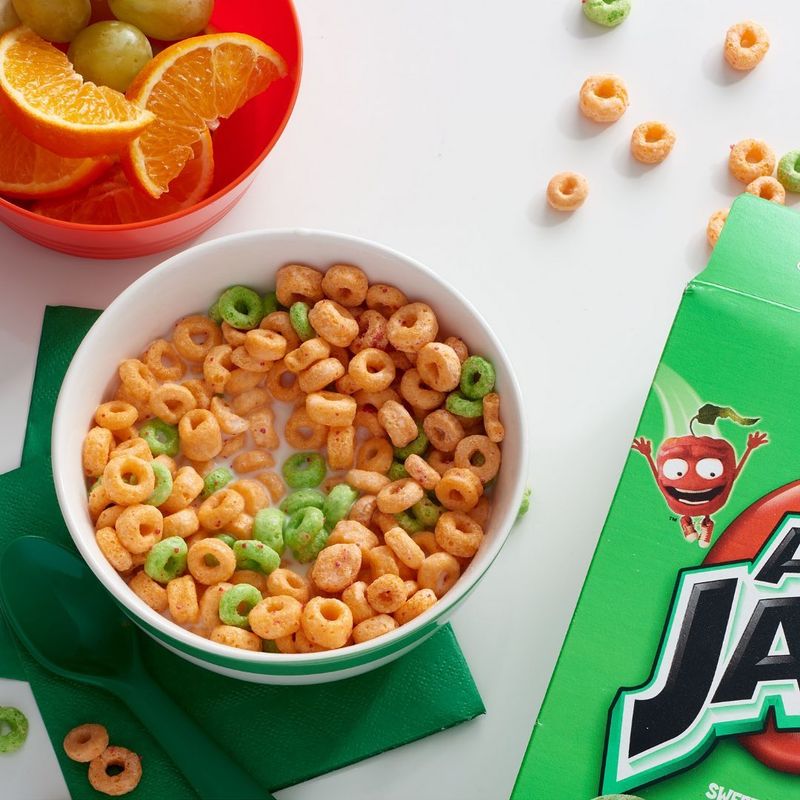
The name suggests apple goodness, but real apples are virtually absent from this cereal. Instead, it relies on artificial flavors and colors to create its signature taste and appearance. The green and orange loops contain food dyes like Red 40 and Blue 1 that have been linked to behavioral issues in some children.
Sugar appears multiple times in the ingredient list through different forms including sugar, corn syrup, and honey. With 12 grams of sugar per serving, it’s essentially a dessert masquerading as breakfast.
The cereal provides minimal fiber and protein, meaning kids will likely feel hungry again shortly after eating. The misleading fruit association gives parents a false sense of providing something somewhat healthy.
7. Reese’s Puffs: Candy for Breakfast
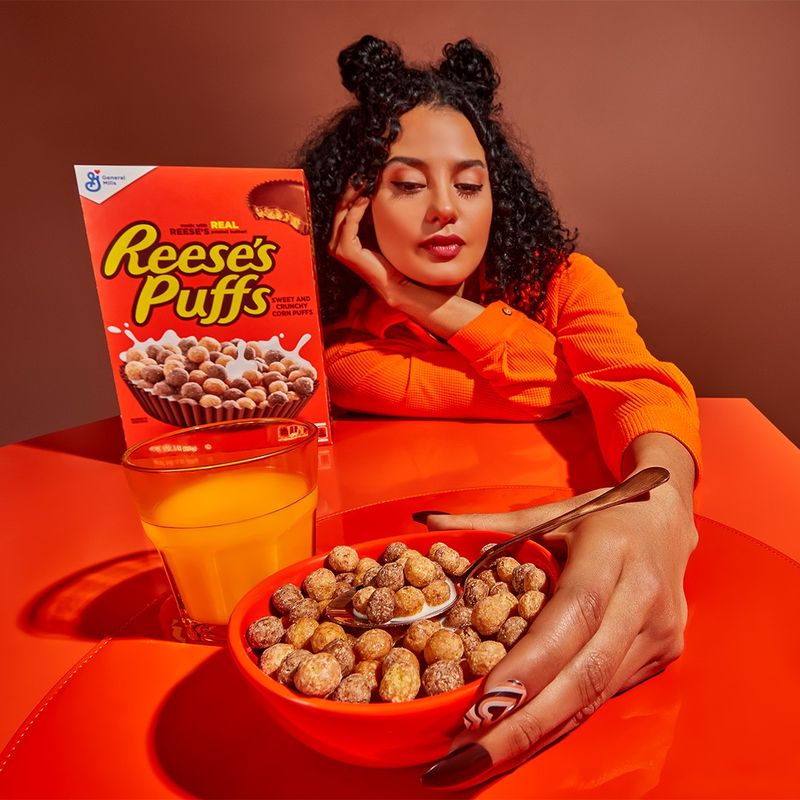
Chocolate and peanut butter make a delicious combination, but turning candy into breakfast normalizes dessert as a morning meal. Each serving contains 13 grams of sugar – that’s more than three teaspoons! The ingredient list reads like a candy wrapper with corn syrup, chocolate, and artificial flavors.
Marketing directly positions this as an acceptable breakfast option despite its nutritional profile being closer to cookies than to wholesome morning fuel. The cereal contains some whole grain corn flour, but not enough to provide meaningful fiber benefits.
Children naturally gravitate toward the familiar candy flavors, making this particularly problematic for establishing healthy breakfast habits. The chocolate-peanut butter combination is specifically engineered to be highly rewarding to the brain.
8. Cap’n Crunch: Mouth-Scraping Sugar Bombs
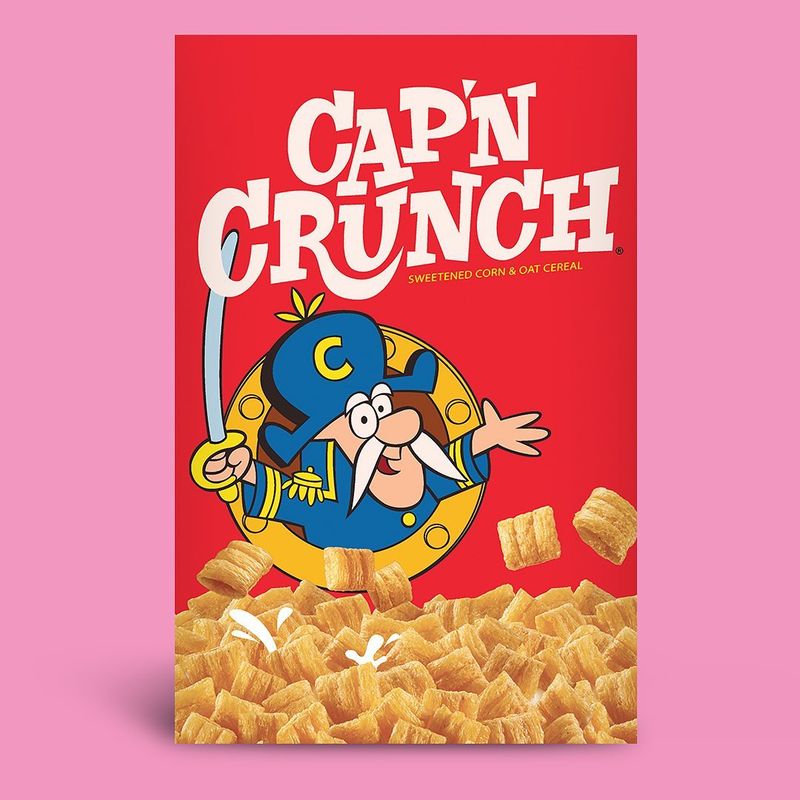
Famous for its mouth-scraping texture, Cap’n Crunch delivers a double blow of concentrated sugar and hard, sharp edges that can actually damage the roof of your mouth. The cereal contains 12 grams of sugar per serving, coming from multiple sources including sugar, brown sugar, and corn syrup.
The yellow squares are made primarily from corn flour rather than whole grains, providing minimal nutritional value. Despite the nautical character suggesting adventure and strength, this cereal offers little nutritional foundation for growing bodies.
Many varieties add even more sugar through berries (Crunch Berries) or peanut butter versions, further increasing the already high sugar content. The hard texture actually slows consumption, sometimes leading to larger portions as kids spend more time eating.
9. Oatmeal With Fresh Fruit: Nature’s Sweet Start
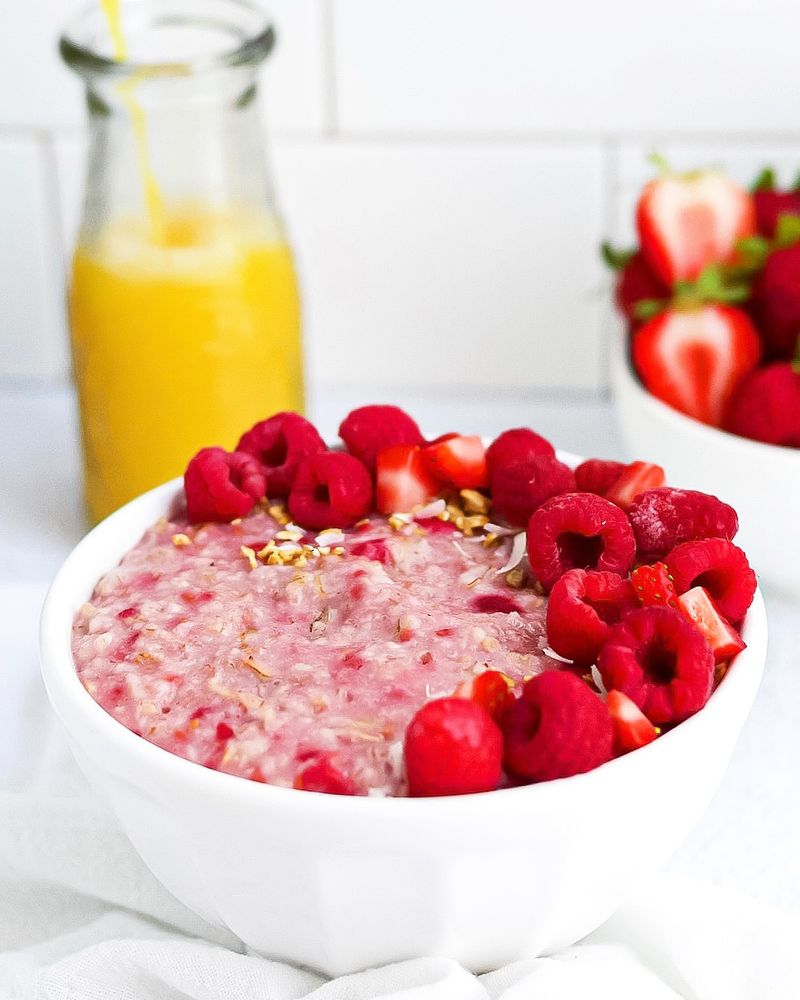
Unlike processed cereals, old-fashioned oatmeal provides complex carbohydrates that digest slowly, giving you steady energy throughout the morning. A half-cup serving offers 4 grams of fiber that supports digestive health and helps you feel full longer.
Adding fresh berries, sliced bananas, or diced apples provides natural sweetness without refined sugar. These fruits contribute essential vitamins, minerals, and antioxidants that processed cereals simply can’t match. The fiber-rich combination helps stabilize blood sugar rather than causing spikes and crashes.
Preparing oatmeal takes just 5 minutes on the stovetop or microwave – hardly longer than pouring a bowl of processed cereal. For extra protein, sprinkle on some nuts or seeds to create a truly balanced breakfast.
10. Plain Shredded Wheat: Simple Whole Grain Goodness
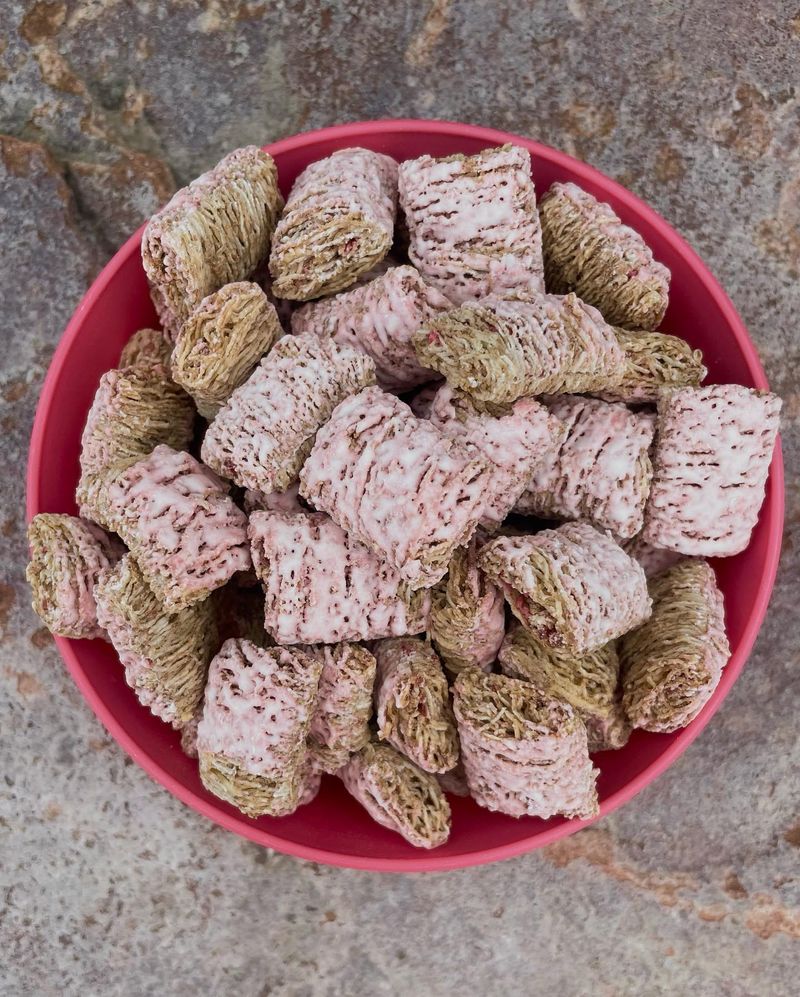
Made from just one ingredient – whole grain wheat – plain shredded wheat stands as a testament to simplicity. The absence of added sugars, artificial flavors, colors, and preservatives makes this a truly clean breakfast option. Each serving provides around 6 grams of fiber, supporting healthy digestion and sustained energy.
The biscuits have a satisfying texture that holds up well in milk. For natural sweetness, add sliced fresh fruit like peaches or strawberries rather than choosing the frosted varieties that can contain 12+ grams of added sugar.
The whole grain content helps regulate blood sugar levels and provides essential B vitamins naturally. Research links regular whole grain consumption to reduced risk of heart disease, certain cancers, and type 2 diabetes.
11. Muesli: European Breakfast Champion
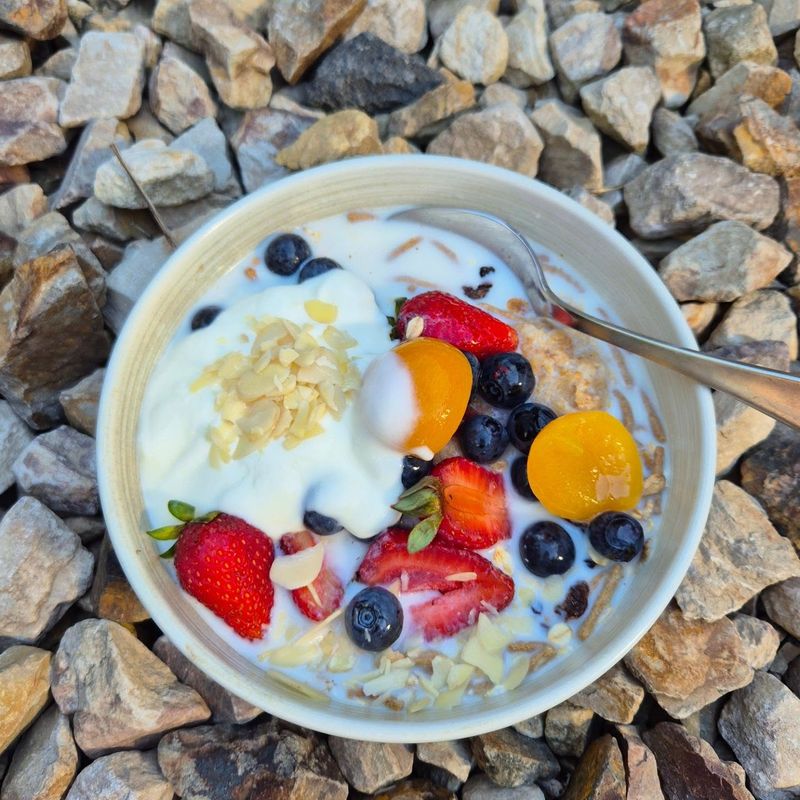
Originally created by Swiss physician Maximilian Bircher-Benner for hospital patients, muesli combines raw rolled oats, nuts, seeds, and dried fruits into a nutritional powerhouse. Unlike granola, traditional muesli isn’t baked with added oils and contains minimal added sugar, if any.
The mixture provides complex carbohydrates alongside healthy fats and plant proteins for sustained energy. Many varieties contain 7+ grams of fiber per serving, supporting digestive health and helping you feel satisfied until lunch.
Muesli can be enjoyed with milk, yogurt, or even soaked overnight in apple juice for a softer texture. The diverse ingredients provide a range of nutrients including vitamin E from nuts, iron from dried fruits, and magnesium from the whole grain base.
12. Sprouted Grain Cereal: Living Nutrition

When grains begin sprouting, their nutritional profile dramatically improves. Sprouting increases protein content, unlocks minerals for better absorption, and reduces phytic acid that can block nutrient uptake. These living foods contain enzymes that aid digestion, making nutrients more bioavailable.
Brands like Ezekiel 4:9 create cereals from sprouted wheat, barley, millet, lentils, soybeans, and spelt – providing complete protein with all nine essential amino acids. Most varieties contain zero added sugar, relying instead on the natural sweetness that develops during sprouting.
The combination of protein (around 8 grams per serving) and fiber (6+ grams) creates exceptional staying power, keeping hunger at bay through the morning. These cereals typically require refrigeration because they contain no preservatives.
13. Greek Yogurt Parfait: Protein-Packed Alternative
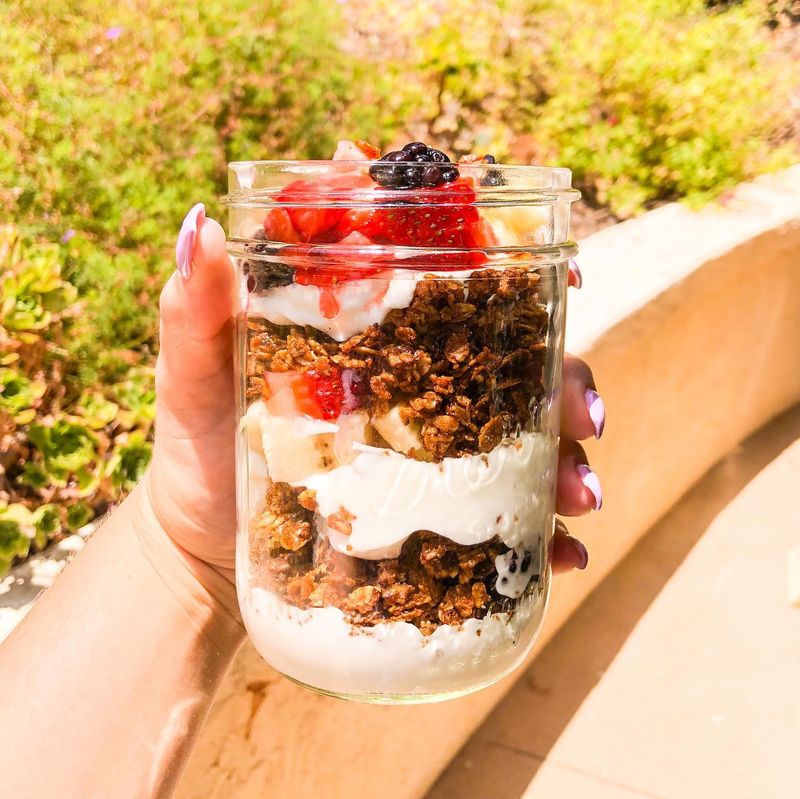
While not technically a cereal, Greek yogurt parfaits offer everything we want from breakfast in a more nutritious package. Plain Greek yogurt provides 15-20 grams of protein per cup – three to four times more than most cereals – helping build and repair muscles while keeping hunger at bay.
Adding a small handful of low-sugar granola offers satisfying crunch and whole grain benefits without the sugar overload of conventional cereals. Fresh berries or sliced fruit contribute natural sweetness, fiber, and a wealth of vitamins and antioxidants.
The combination creates a perfect macronutrient balance of protein, complex carbohydrates, and healthy fats. The probiotics in yogurt support gut health, potentially improving digestion and immunity – benefits no conventional cereal can claim.
Leave a comment